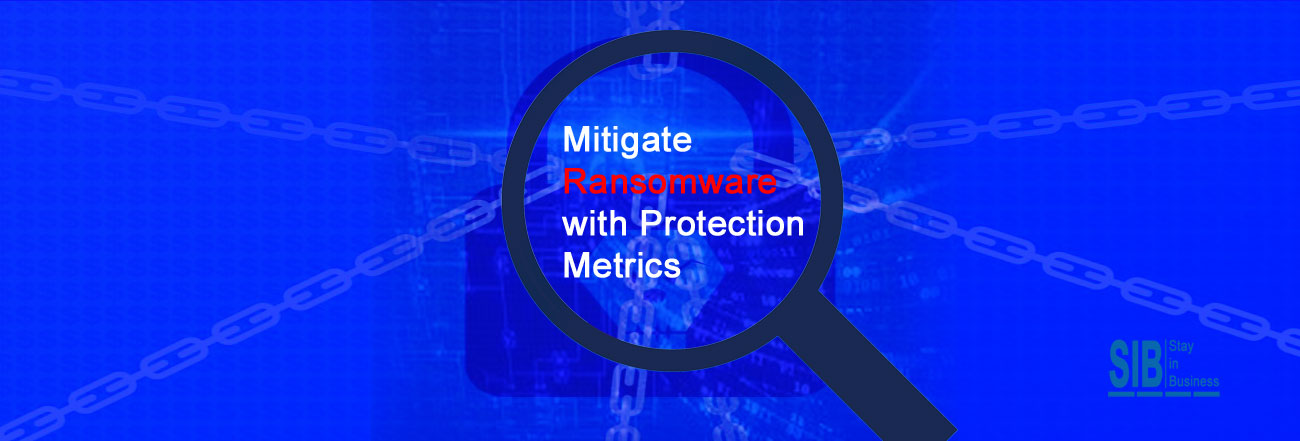How to Mitigate Ransomware with Protection Metrics

Ransomware attackers are dominating the news nowadays. Ransomware is a malware that stops access to a system, device, or file until a ransom amount is paid. Ransomware encrypts files on the endpoint, intimidating to erase files, or blocking system access. Your sensitive data is crucial for your business, and you need to have a comprehensive approach to cybersecurity so that you stay safe. Cyber criminals are doing everything to exploit the easy targets. By forming a set of security metrics and measurements, you can reduce the risk of ransomware.
How to reduce the risk of ransomware?
External Security Posture
Initially, take into account how your organization measures external security posture. What is the posture of your organization from outside? Besides, look into the fundamental functioning, DNS records, email security, availability of SSL v3 encryption, etc. Being vigilant of those things that attackers are looking for and making sure your perimeter has none is one of the effective ways to reduce ransomware.
Patch Measurement
One of the major points to stop ransomware is to quickly patch vulnerabilities on your network, A software patch is a quick-fix job for a piece of programming formed to resolve functionality issues, enhance security, and add new features. During its lifetime, software will encounter issues called bugs. A patch is the quick fix to those issues. However, even patches are prone to allow malicious activities. Attackers may gain access to a network by means of a phishing email and raise the level of administration privileges. Simultaneously, they may target unpatched assets to set up programs including ransomware. The organizations are just complacent with the functioning of assets and don’t worry about patching. It is a good practice to push out critical patches within 72 hours.
Phishing Measurement
Email phishing is the most common method by which cybercriminals initially gain unauthorized access. These phishing attacks can then lead to ransomware events. Phishing testing typically takes the form of emails sent by an organization’s IT team simulating common phishing strategies to identify whether staff can determine and differentiate legitimate emails from phishing scams. The reporting of the employees regarding this to the company’s information security team will follow later. Though falling for a phishing test email once or twice is generally not a major concern for an organization (which will only prompt the staff to be more alert), repeated failures may trigger an organization to contemplate implementing some remedial measures to make sure that such employees are not susceptible to a real phishing attack.
A phishing test is utilized by IT professionals to develop mock phishing emails that are sent to employees, thereby letting the latter comprehend the various forms a phishing attack can take. The percentage of employees who are timely in their testing helps an organization in not making a ransomware get into the organization.
Privilege Concentration
Ransomware needs privilege to execute its action. Hence, it is essential to secure privileged credentials with an organizational privileged password management solution. It is also a good practice to measure how many Active Directory domain administrators you have.
Valid Authentication and Valid Authorization
It is critical to monitor the integrity of authentication protocols for validating that each individual having credentials is who they say they are. Organizations should also take steps to measure valid authorizations, including outbound Windows domain trusts that let administrative privileges to be relied upon across organizational boundaries.
Measure the Security of Windows Service Accounts
Any password change of a superuser credential (highly privileged accounts used majorly for administration by specialized IT employees) must not only be carried out in the authentication system (i.e. Active Directory) but also in every application/service that stores the password for that particular credential. There arises the need to not only update the authenticator but also every reference.
Sometimes, dumb passwords are given that are not easy guessable and also do not change. Recent versions of Active Directory provide IT staff the ability to utilize Managed Service Accounts in several cases. Managed Service Accounts consist of an automatically managed, complex password that eliminates the need of manually handling password rotation and security.
Measure the number of backups written to immutable storage
A good practice is to write your backups and later store them in a backup that cannot be deleted. Thus ransomware attackers who are attempting to delete your backups as part of their attack chain cannot do so due to the immutable storage.
How to ensure your ransomware controls are functioning as expected?
Continuous Controls Monitoring allows you to make sure that your controls are implemented as expected. It also automates your security metrics and measurements surrounding those controls. Whether it is controls coverage or identifying critical assets, Continuous Control Monitoring takes care of it.
Although ransomware can lead to serious damage to your business and reputation, it can be won. If your organization is strong and doesn’t have a weak link, then ransomware attacks can be mitigated.
Categories: Data Security, Identity Protection, Safety
